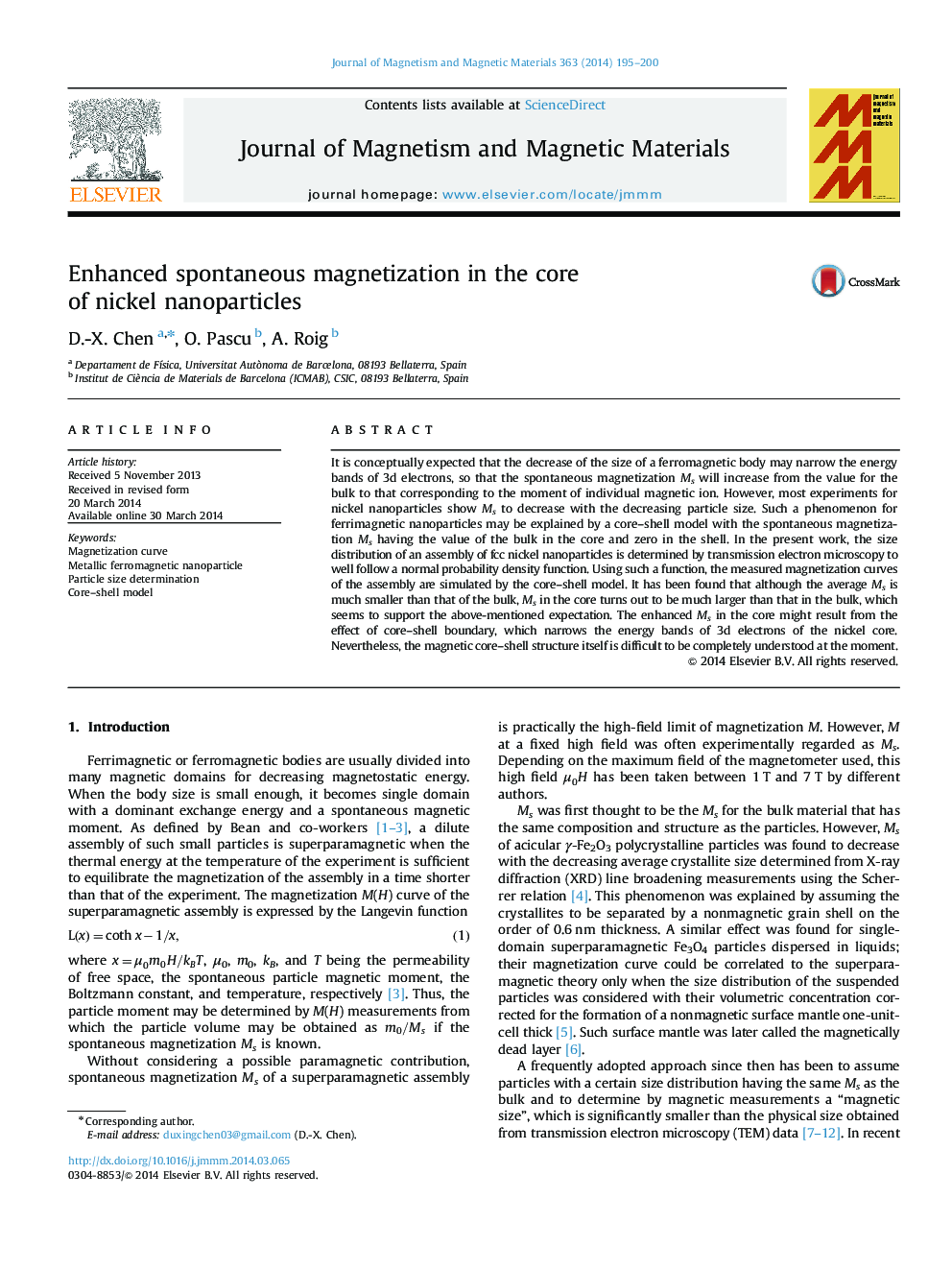| Article ID | Journal | Published Year | Pages | File Type |
|---|---|---|---|---|
| 1799658 | Journal of Magnetism and Magnetic Materials | 2014 | 6 Pages |
•TEM size distribution of Ni nanoparticle assembly follows normal probability function.•Magnetization curves of the assembly are very carefully simulated by a core-shell model.•The moment is concentrated in tiny core with much larger MsMs than that of the bulk.•The magnetic core–shell structure is still difficult to be fully understood.
It is conceptually expected that the decrease of the size of a ferromagnetic body may narrow the energy bands of 3d electrons, so that the spontaneous magnetization Ms will increase from the value for the bulk to that corresponding to the moment of individual magnetic ion. However, most experiments for nickel nanoparticles show Ms to decrease with the decreasing particle size. Such a phenomenon for ferrimagnetic nanoparticles may be explained by a core–shell model with the spontaneous magnetization Ms having the value of the bulk in the core and zero in the shell. In the present work, the size distribution of an assembly of fcc nickel nanoparticles is determined by transmission electron microscopy to well follow a normal probability density function. Using such a function, the measured magnetization curves of the assembly are simulated by the core–shell model. It has been found that although the average Ms is much smaller than that of the bulk, Ms in the core turns out to be much larger than that in the bulk, which seems to support the above-mentioned expectation. The enhanced Ms in the core might result from the effect of core–shell boundary, which narrows the energy bands of 3d electrons of the nickel core. Nevertheless, the magnetic core–shell structure itself is difficult to be completely understood at the moment.
